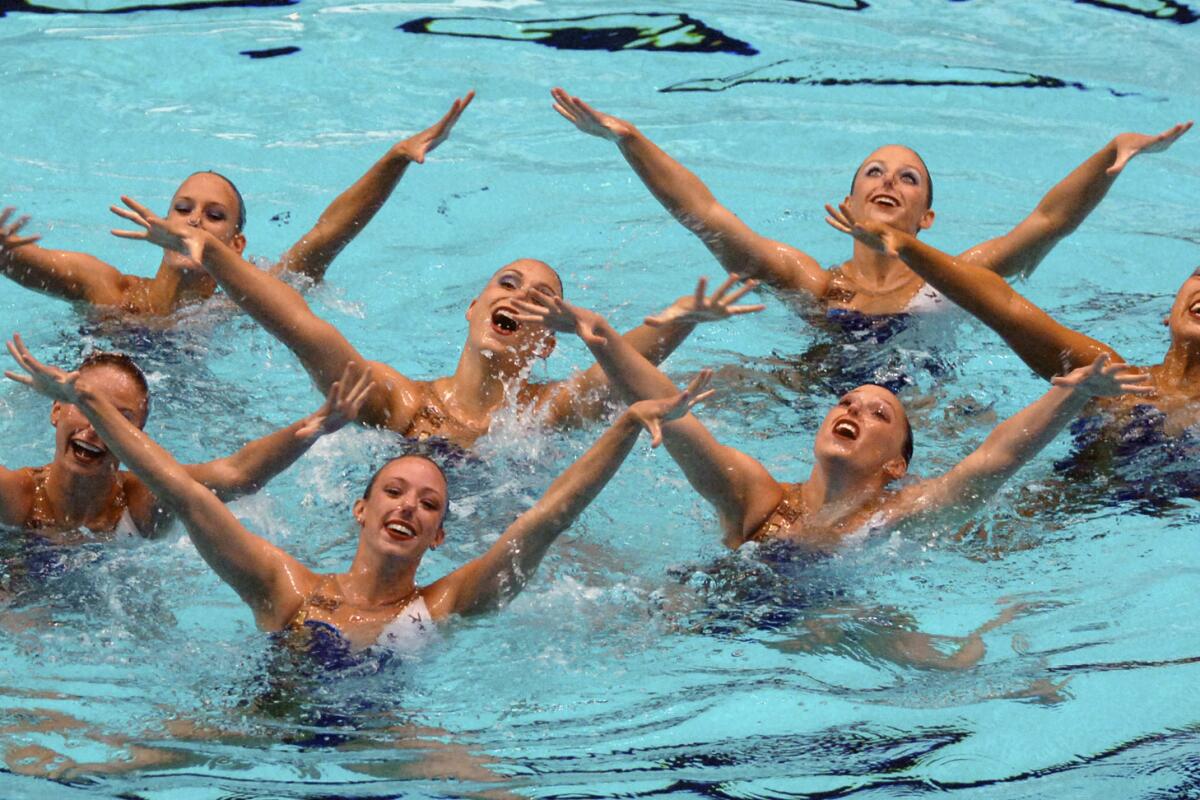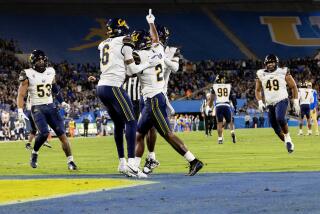Editorial: Leveling the playing field in college admissions by trimming the sports lineup

College football games are being sharply curtailed this fall because of the risk of spreading the new coronavirus. To the dismay of many fans, the entire 2020 season appears to be in jeopardy.
Less noticed has been a smaller but more lasting shakeup in the world of college athletics: the elimination of some entire teams.
The schools involved cite various reasons, often blaming financial problems caused by the pandemic. But no matter what the impetus, the result will almost certainly be good news for the fairness of college admissions: Fewer spots will go toward side-door acceptances of student athletes, many of them privileged, and more will be available for Black and Latino applicants who haven’t attended private schools or couldn’t afford the cost to play.
By May 30, close to 100 sports programs had been cut by U.S. colleges. And that was before Dartmouth College eliminated five, the University of Massachusetts Dartmouth cut eight, and Brown and Stanford universities terminated 11 each.
These weren’t football, basketball and soccer, widely popular games that are commonly played in public schools and therefore available to students of all income levels. Instead, colleges have most often axed sports that require expensive training outside school: fencing, equestrian, skiing, sailing, golf and some rowing teams.
The athletic side door to colleges, especially prestigious ones, has been wide open for many years. It received little attention until some very wealthy parents were charged with paying a college-prep tutor to bribe college athletic coaches, who then would tout their offspring as must-have recruits. In most cases, the students hadn’t even been involved in the sport.
As outrage-worthy as that has been, it ignores the much bigger issue: With relatively few exceptions, even the legitimate college-admissions preference for athletes primarily benefits white, affluent applicants.
“Students with strong athletic ability are often admitted despite having weaker academic credentials than other students, with one analysis of 90,000 students at selective colleges and universities estimating that recruited athletes are as much as four times as likely to be admitted as other similarly qualified applicants,” according to a 2016 report by the Jack Kent Cooke Foundation.
“The athletic preference is particularly objectionable because, once admitted, these athletes under-perform academically…. Moreover, the popular notion that recruited athletes tend to come from minority and indigent families turns out to be just false; at least among the highly selective institutions, the vast bulk of recruited athletes are in sports that are rarely available to low-income, particularly urban, applicants.”
Because college admission is a zero-sum game, that means fewer spots available for the non-athletes, especially low-income Black and Latino students who haven’t had the advantage of being chauffeured by their parents to a rowing club or horse stable. It ends up being another form of systemic racism that should be particularly taken to heart now, during nationwide discussions of the Black Lives Matter movement.
Contrary to popular belief, most varsity teams don’t bring in the sort of big alumni donations that more than defray the cost. Studies have found that their contributions would not fall precipitously if teams were cut. Most teams cost more than they bring in anyway; at all but a few schools, even football is a drain on university coffers, benefiting relatively few students.
As Americans discuss the unaffordability of college tuition and whether it would be possible to make higher education free, as many European nations do, they should observe one way in which those overseas colleges keep costs low: They have few if any varsity sports.
About 13% of Stanford students are college athletes. That’s 900 spots at a highly sought-after school that accepts only about 5% of applicants.
That’s not to say colleges shouldn’t have varsity sports teams. For those who participate, sports can provide structure and discipline that help them navigate college, while also promoting friendships and a sense of accomplishment. And even for those who don’t, games and mascots — not Native American ones, please — can build school spirit and celebrate achievements beyond the purely academic. A few of them provide a pathway for Black and Latino students to attend. But even after eliminating 11 programs, Stanford still has 25. It’s not as though varsity sports are disappearing.
The balance between sports and academics has been off-kilter in college admissions, and in ways that have unfairly disadvantaged a lot of great students. Time to, um, level the playing field.
More to Read
A cure for the common opinion
Get thought-provoking perspectives with our weekly newsletter.
You may occasionally receive promotional content from the Los Angeles Times.






